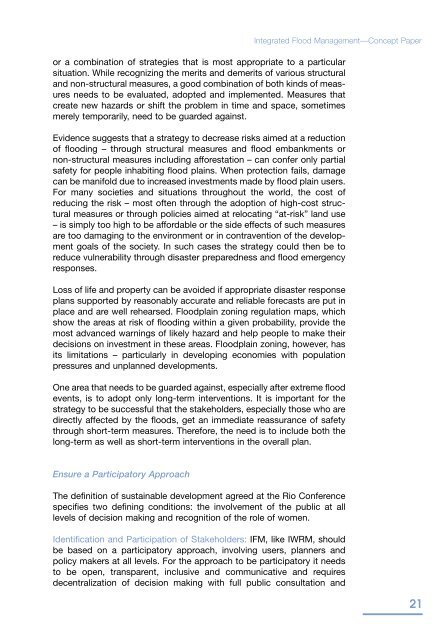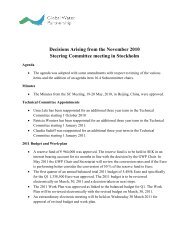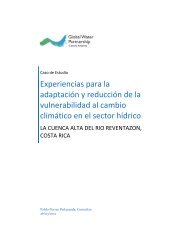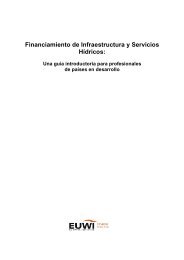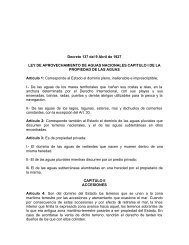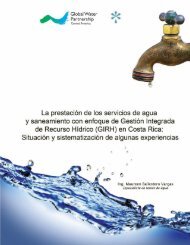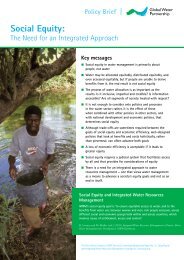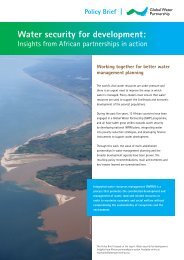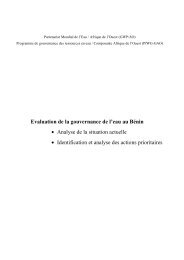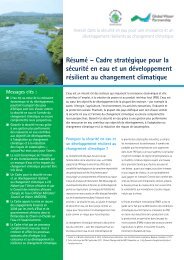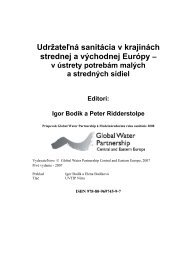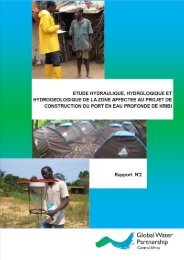Integrated Flood Management. Concept Paper - Cap-Net
Integrated Flood Management. Concept Paper - Cap-Net
Integrated Flood Management. Concept Paper - Cap-Net
You also want an ePaper? Increase the reach of your titles
YUMPU automatically turns print PDFs into web optimized ePapers that Google loves.
<strong>Integrated</strong> <strong>Flood</strong> <strong>Management</strong>—<strong>Concept</strong> <strong>Paper</strong><br />
or a combination of strategies that is most appropriate to a particular<br />
situation. While recognizing the merits and demerits of various structural<br />
and non-structural measures, a good combination of both kinds of measures<br />
needs to be evaluated, adopted and implemented. Measures that<br />
create new hazards or shift the problem in time and space, sometimes<br />
merely temporarily, need to be guarded against.<br />
Evidence suggests that a strategy to decrease risks aimed at a reduction<br />
of flooding – through structural measures and flood embankments or<br />
non-structural measures including afforestation – can confer only partial<br />
safety for people inhabiting flood plains. When protection fails, damage<br />
can be manifold due to increased investments made by flood plain users.<br />
For many societies and situations throughout the world, the cost of<br />
reducing the risk – most often through the adoption of high-cost structural<br />
measures or through policies aimed at relocating “at-risk” land use<br />
– is simply too high to be affordable or the side effects of such measures<br />
are too damaging to the environment or in contravention of the development<br />
goals of the society. In such cases the strategy could then be to<br />
reduce vulnerability through disaster preparedness and flood emergency<br />
responses.<br />
Loss of life and property can be avoided if appropriate disaster response<br />
plans supported by reasonably accurate and reliable forecasts are put in<br />
place and are well rehearsed. <strong>Flood</strong>plain zoning regulation maps, which<br />
show the areas at risk of flooding within a given probability, provide the<br />
most advanced warnings of likely hazard and help people to make their<br />
decisions on investment in these areas. <strong>Flood</strong>plain zoning, however, has<br />
its limitations – particularly in developing economies with population<br />
pressures and unplanned developments.<br />
One area that needs to be guarded against, especially after extreme flood<br />
events, is to adopt only long-term interventions. It is important for the<br />
strategy to be successful that the stakeholders, especially those who are<br />
directly affected by the floods, get an immediate reassurance of safety<br />
through short-term measures. Therefore, the need is to include both the<br />
long-term as well as short-term interventions in the overall plan.<br />
Ensure a Participatory Approach<br />
The definition of sustainable development agreed at the Rio Conference<br />
specifies two defining conditions: the involvement of the public at all<br />
levels of decision making and recognition of the role of women.<br />
Identification and Participation of Stakeholders: IFM, like IWRM, should<br />
be based on a participatory approach, involving users, planners and<br />
policy makers at all levels. For the approach to be participatory it needs<br />
to be open, transparent, inclusive and communicative and requires<br />
decentralization of decision making with full public consultation and<br />
21


